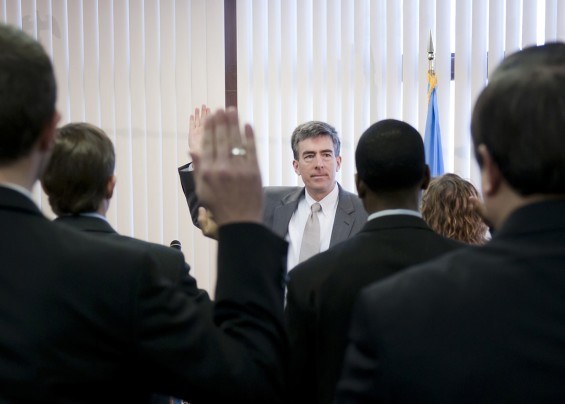Avoid Productivity “Hacks;” Take These Two Steps to Use Time Wisely
About a month ago, I came across an article touting Elon Musk’s top-10 secrets for success.
Like many profiles spotlighting Silicon Valley leaders, the piece includes some great advice for fitting more into your day—batching similar tasks to get more done, for example—but I often wonder about the untold parts of these articles.
What are the consequences of trying to maximize every minute of every day at work?
In the weeks since that article appeared, the toll of Musk’s productivity appears high. While he once made headlines for the exciting work of his companies Tesla and SpaceX, the headlines featuring his name this summer have damaged his reputation and his companies.
In an emotional New York Times interview, he admitted to spending days in the Tesla factory to resolve production delays, forgoing sleep, proper nutrition and time with his family. The inattention to his personal needs may be the source for some of his odd behavior as of late, including slanderous comments about a diver who rescued a children’s soccer team in Thailand, tweeting threats to take Tesla private, and smoking marijuana and drinking whiskey throughout a podcast interview.
All the while, his companies’ problems continue to mount, he’s facing a lawsuit and federal investigation, and a steady stream of senior leaders are departing Tesla.
Because Musk is not only an entrepreneur, but an innovator, many are begging him to embrace a better way and rooting for his success. Most notably, Arianna Huffington published a letter to Musk—and sleep-deprived leaders everywhere—asking that he pay attention to the basic science and health benefits of sleep, proper nutrition, and a balanced lifestyle.
Although few leaders have the same public profile as Musk, the senior leaders I coach have a similar complaint: there just aren’t enough hours in the day to get everything done!
Maybe we’re solving the wrong problem. Rather than looking for another so-called productivity hack to speed up and increase our quantity of work, perhaps we should be looking for ways to slow down and increase the quality of our leadership.
And rather than looking to the latest thought leadership on the topic, we should be looking to the time-tested wisdom from some of the original thinkers in the field: Stephen R. Covey and Peter Drucker.
The senior leaders I work with have found significant benefits—greater productivity, improved employee engagement, and better work-life balance—from taking two practical steps inspired by these authors.
Begin Each Day With a Plan; Finish Each Day With Lessons Learned
Borrowing from Covey’s work in The 7 Habits of Highly Effective People, high-quality leaders spend time at the beginning of the day planning their schedule and at the end of the day reviewing lessons learned.
Whether you have five minutes or 60, proactive executives know that they will be better equipped to make informed tradeoffs throughout the day if they’ve determined their priorities and a plan for getting things done. As a result, they’re much less likely to be in reaction mode due to people stopping by their desks, the ping of emails, or the real, inevitable crises that occur.
You can build your own approach, or you can rely on tools developed by others. Personally, I’m a fan of The Five Minute Journal. Each morning, the journal offers three prompts to clarify your focus: (1) I am grateful for…; (2) what will make today great; and (3) a daily affirmation. The prompts are scientifically proven to help leaders start the day off right.
At the end of the day, the journal offers two prompts to review lessons learned: (1) what were three amazing things that happened today and (2) how could I have made today even better.
When Feeling Overwhelmed, Ask Two More Questions:
(1) What Must Be Done? And (2) Is This the Right Thing for the Enterprise?
In what should be required reading for every leader, Peter Drucker’s The Effective Executive: The Definitive Guide to Getting the Right Things Done, outlines the practices he discovered working with hundreds of effective executives over a 65-year career.
While the book describes eight actions in total, the leaders I work with find immediate benefits from adopting two questions when feeling overwhelmed or facing a dilemma about where to spend their time. They ask, what must be done and is this the right thing for the enterprise?
Thinking back to Musk, had he simply asked himself these two questions, there’s no way he would have been tweeting insults at rescuers or rumors about taking his company private. And maybe he would have realized that his real problem is not solving Tesla’s production delays, but rather understanding the reasons senior leaders keep leaving Tesla, improving a toxic workplace culture, and recruiting new leaders capable of solving those problems. That’s leadership.
It’s easy—even tempting sometimes—to fall into the habit of being the super-human leader responsible for everything. Instead, give yourself at least 15 minutes a day to develop a plan, prepare yourself for the unpredictable choices you’ll confront by asking two questions (i.e., what must be done and what’s right for the enterprise), and review the lessons learned at the end of each day.
Building these habits will take time, but experience suggests you will realize tangible benefits as you become more proactive versus reactive to the events of each day.
Related Posts
Leave a Reply Cancel reply
Categories
- Fed Coach Columns (1)
- Tips & tricks (1)


